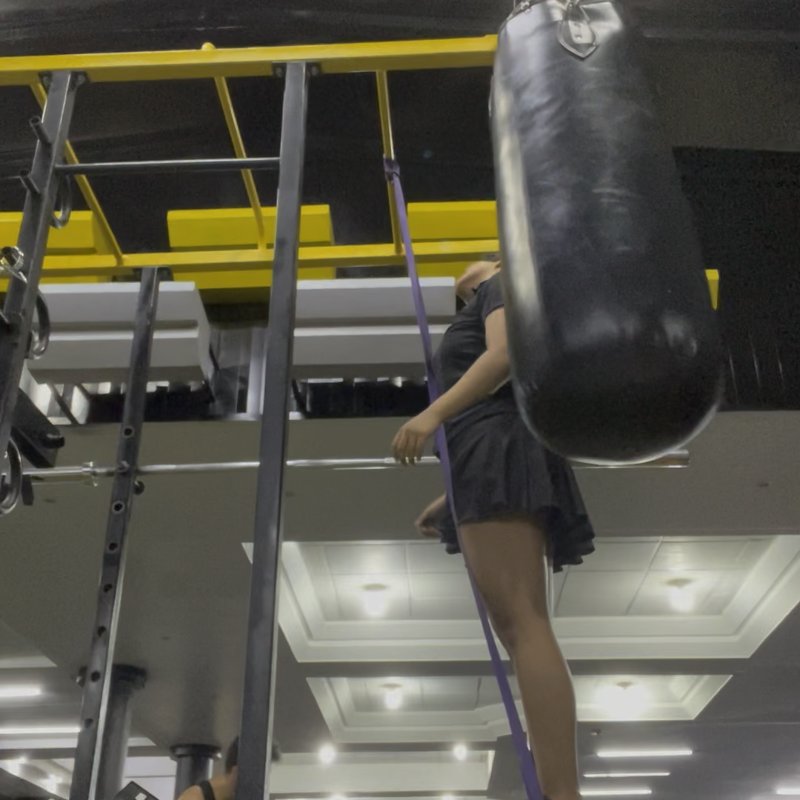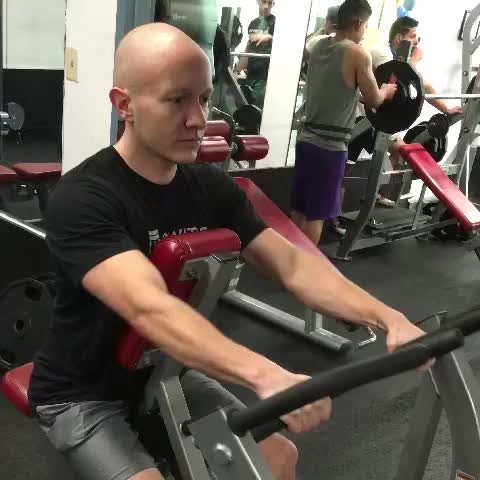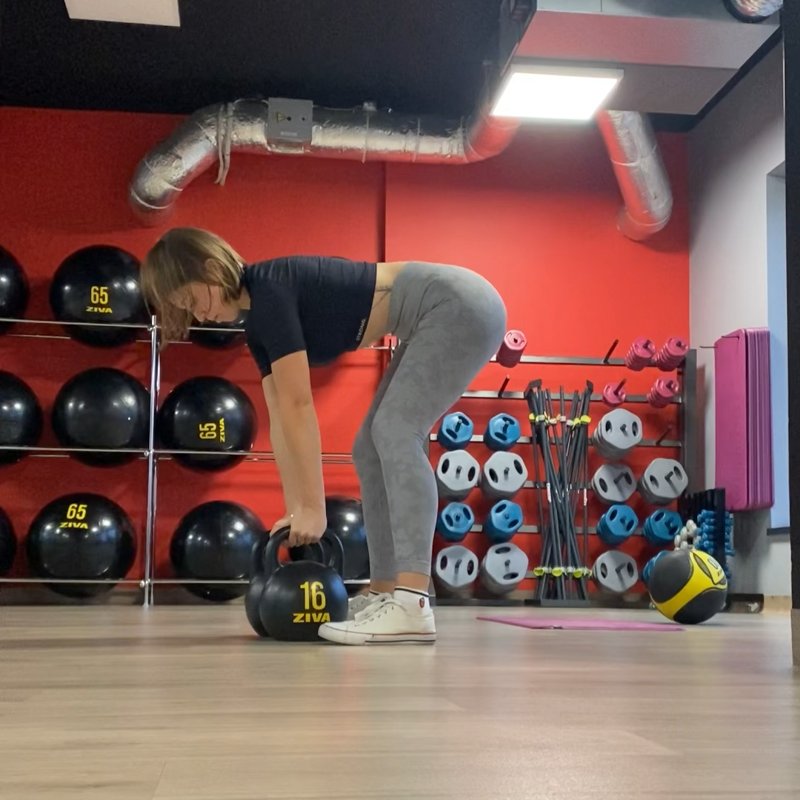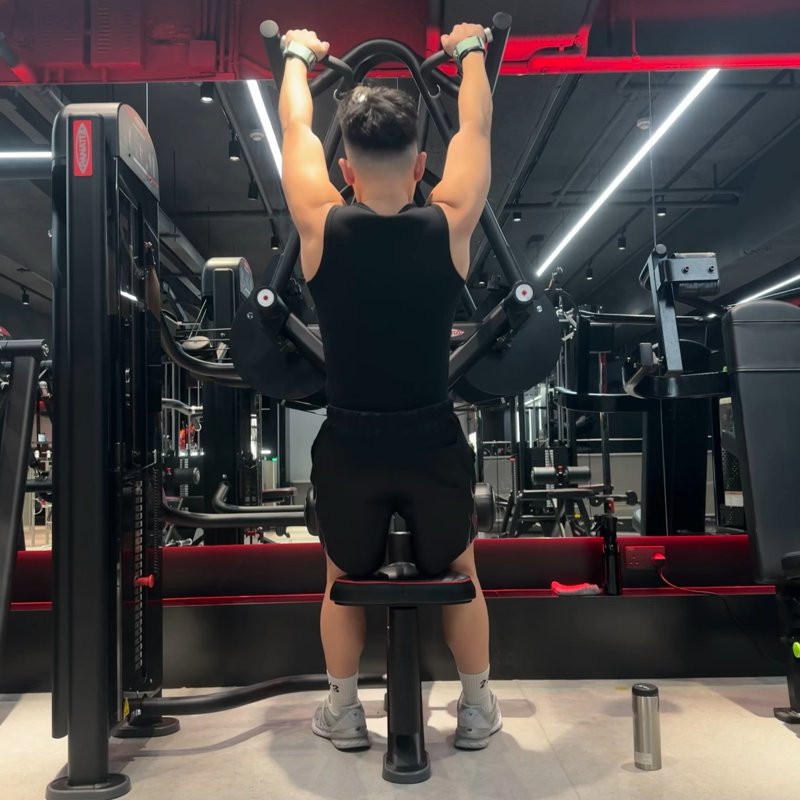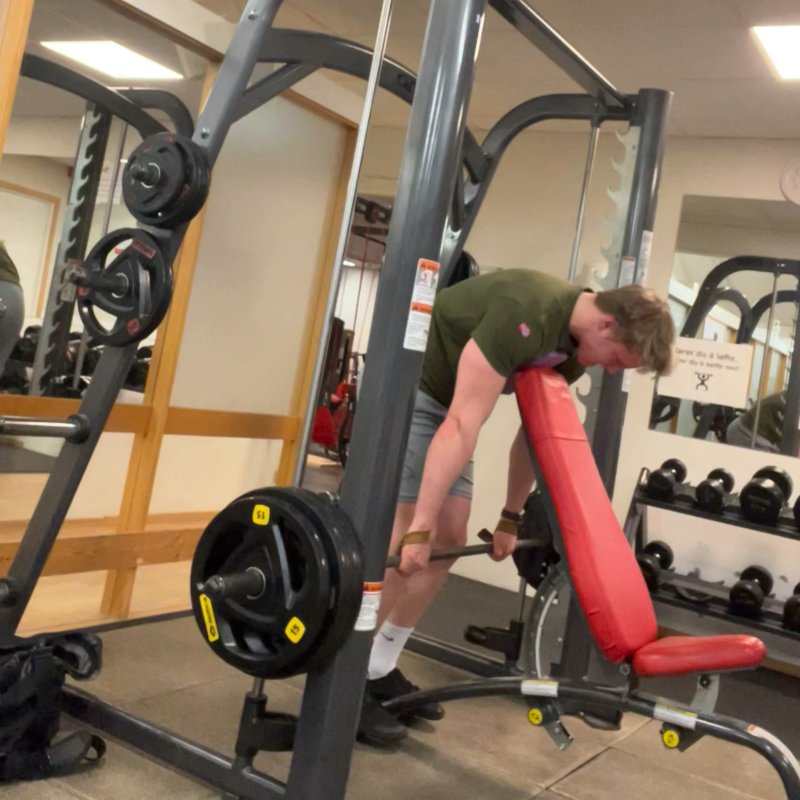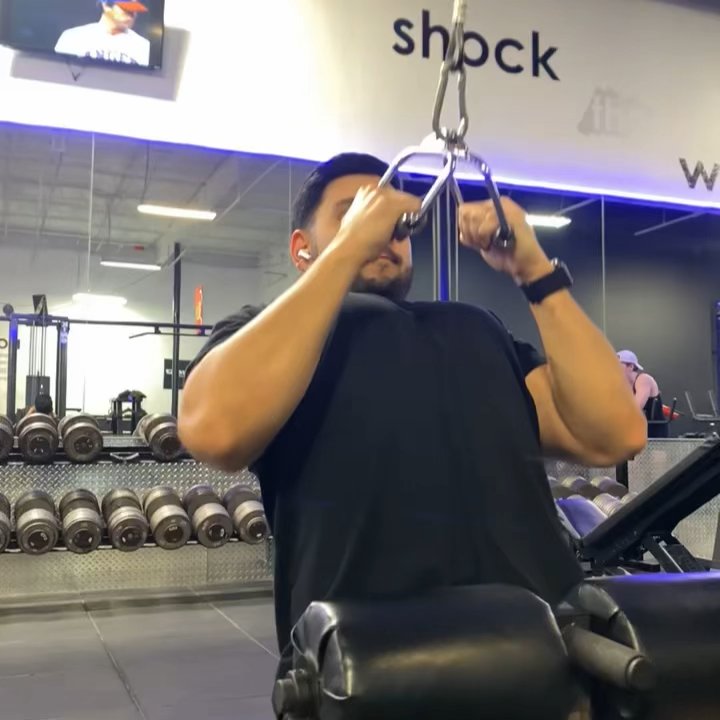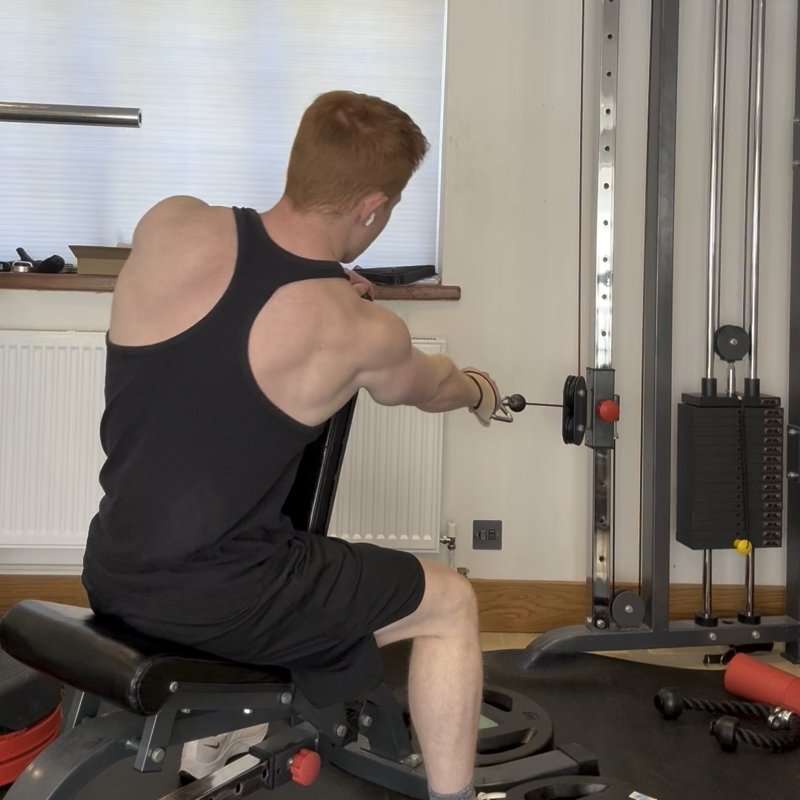Assisted Pull-Up: The Ultimate Guide
The Assisted Pull-Up is a modified version of the traditional pull-up that uses either a machine counterweight or resistance bands to reduce the effective body weight being lifted, making it an ideal progression exercise for developing the strength needed for unassisted pull-ups.
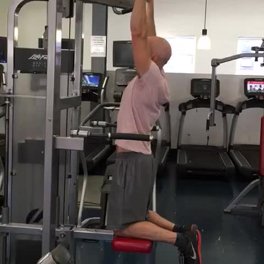
Quick Facts
Key Benefit
Progressive development of pull-up strength
Primary Muscles
Lats, Rhomboids, Traps
Secondary Muscles
Abdominals, Biceps, Brachialis, Posterior Deltoids, Rotator Cuff
Equipment
machine (optional), resistance band (optional), pull-up bar
Difficulty
Beginner
Type
Strength
In This Guide
Ready to master the Assisted Pull-Up?
Track your progress, see improvements over time, and build strength consistently.
Download GravitusThe Assisted Pull-Up serves as a crucial bridge in strength development, enabling individuals to work toward one of the most effective upper body exercises—the unassisted pull-up. This modified version reduces the effective load being lifted through either machine assistance or resistance bands, allowing proper technique development while progressively building the necessary strength.
What makes this exercise particularly valuable is its scalability—the level of assistance can be precisely adjusted to match your current strength level and gradually reduced as you become stronger. This creates a clear progression pathway toward unassisted pull-ups that can be systematically followed by individuals at nearly any fitness level.
Beyond serving as a stepping stone to full pull-ups, the Assisted Pull-Up provides many of the same benefits as its unassisted counterpart. It targets the major muscles of the back, particularly the latissimus dorsi, while also engaging the biceps, rear shoulders, and core. The vertical pulling pattern also improves shoulder mobility and postural strength that counteracts the forward-rounded position common in modern daily life.
Whether you're a beginner working toward your first unassisted pull-up, recovering from an injury, or an experienced lifter incorporating high-volume pull training, the Assisted Pull-Up offers a scalable and effective approach to developing upper body pulling strength, muscular development, and functional capability.
Benefits of Assisted Pull-Ups
The Assisted Pull-Up offers numerous advantages that make it a valuable addition to any strength training program.
Progressive Strength Development
Allows for systematic progression toward unassisted pull-ups by gradually reducing the amount of assistance provided.
Proper Technique Learning
Provides an opportunity to master proper pull-up form and movement patterns without the full challenge of bodyweight resistance.
Back Development
Effectively targets the major muscles of the back, particularly the latissimus dorsi, rhomboids, and trapezius, even with assistance.
Reduced Injury Risk
Decreases the strain on joints and tendons compared to struggling with unassisted pull-ups before adequate strength is developed.
Shoulder Mobility
Improves shoulder function and mobility through a complete range of motion with appropriate resistance.
Proper Form & Technique
Setup
- For machine-assisted pull-ups, adjust the counterweight to provide appropriate assistance for your strength level.
- For band-assisted pull-ups, secure a resistance band to the pull-up bar and place your foot or knee in the bottom loop.
- Grasp the pull-up bar with hands slightly wider than shoulder-width apart, using an overhand grip (palms facing away).
- Allow your body to hang with arms fully extended, creating a complete stretch in the lats and shoulders.
- Position your body in a slight hollow position with core engaged, chest up, and shoulders pulled down away from your ears.
- For machine assistance, place your knees or feet on the platform as directed by the specific machine design.
- For band assistance, ensure the band is securely supporting your foot or knee without risk of slipping.
- Look straight ahead or slightly upward, maintaining a neutral neck position aligned with your spine.
Movement
- Initiate the movement by pulling your shoulder blades down and back (scapular retraction).
- Pull your body upward by driving your elbows down toward your sides, not simply bending your arms.
- Maintain the hollow body position throughout the movement, avoiding excessive arching or swinging.
- Continue pulling until your chin clears the bar, or ideally until your upper chest approaches the bar.
- Pause briefly at the top position, focusing on squeezing your back muscles.
- Lower your body with control, fully extending the arms without allowing the shoulders to shrug up toward the ears.
- Allow for a momentary stretch at the bottom position without completely relaxing the muscles.
- Repeat for the desired number of repetitions, maintaining proper form throughout.
Key Form Tips
Assistance Level
Choose an assistance level that allows for challenging but controlled repetitions with proper form - typically 8-12 reps with the last few being difficult.
Grip Tension
Maintain a firm but not death-like grip on the bar, focusing on pulling primarily with your back rather than your arms.
Elbow Path
Focus on driving your elbows down and slightly back, as if trying to put them in your back pockets, to maximize lat engagement.
Body Position
Avoid excessive leg swinging or kipping by maintaining tension through your core and lower body throughout the movement.
Range of Motion
Aim for complete range of motion from a dead hang at the bottom to chin over bar (or chest to bar for advanced practitioners) at the top.
Muscles Worked
Primary Muscles
- lats: The large, flat muscles spanning the width of the middle and lower back, primarily responsible for the pulling action.
- rhomboids: The muscles between the shoulder blades that retract the scapulae during the pulling movement.
- traps: The diamond-shaped muscle extending from the neck to mid-back, involved in scapular retraction and depression.
Secondary Muscles
- biceps: The front arm muscles that assist in flexing the elbow during the pulling movement.
- posterior deltoids: The back portion of the shoulder muscles that assist in the pulling motion.
- brachialis: The deeper arm muscles that contribute to elbow flexion during the pull-up.
- rotator cuff: Smaller muscles near the shoulder blade that assist the lats during pulling movements.
- abdominals: Engaged isometrically to maintain proper body position throughout the exercise.
Common Mistakes and How to Fix Them
Using Too Much Assistance
Selecting a level of assistance that makes the exercise too easy, reducing muscle activation and slowing progress toward unassisted pull-ups. Choose an assistance level that challenges you within the 8-12 repetition range, with the last few reps being difficult but achievable with proper form. Periodically test with less assistance to gauge progress. Focus on quality of movement rather than quantity of repetitions, gradually reducing assistance as strength improves. Consider using an assistance level that allows you to perform 1-2 more repetitions than you could with less assistance.
Incomplete Range of Motion
Not fully extending the arms at the bottom or not pulling high enough at the top, limiting muscle development and movement pattern training. Focus on achieving a full stretch at the bottom of each repetition, with arms completely extended (but shoulders still engaged/active). Ensure you pull until at least your chin clears the bar at the top position, ideally working toward bringing your upper chest to the bar. If necessary, increase assistance temporarily to achieve proper range of motion. Consider implementing specific range of motion drills like scapular pull-ups (focusing just on shoulder blade movement) to develop control throughout the full range.
Excessive Body Swinging
Using momentum by swinging the legs or body to assist in the pulling motion, reducing muscle activation and reinforcing poor movement patterns. Engage your core throughout the movement to maintain a controlled body position. Consider crossing your ankles and slightly bending your knees to reduce the pendulum effect. Focus on a slow, controlled tempo, particularly during the lowering phase. If swinging persists, temporarily increase assistance until proper form can be maintained. Practice maintaining tension throughout your entire body during each repetition.
Shoulder Shrugging
Initiating the movement by elevating the shoulders toward the ears rather than depressing and retracting the shoulder blades, which can reduce lat engagement and increase strain on the neck and upper traps. Begin each repetition by pulling your shoulder blades down and back before bending your elbows. Practice scapular depression drills separately to develop awareness of this movement pattern. Think about pointing your elbows toward the ground rather than pulling with your hands. Consider incorporating supportive exercises like straight-arm pulldowns that specifically target scapular depression and lat activation.
Poor Grip Positioning
Placing hands too wide, too narrow, or asymmetrically on the bar, potentially creating uneven development or suboptimal muscle recruitment. Start with a grip that positions your hands slightly wider than shoulder-width apart. Ensure your grip is symmetrical by using the knurling marks on the bar as reference points. Experiment with grip width within a moderate range to find what feels most effective for your individual structure. Consider temporarily marking your optimal hand positions on the bar with chalk or tape until proper positioning becomes habitual.
Assisted Pull-Up Variations
Assistance Methods
-

Machine-Assisted Pull-Up
Using a specialized machine with a counterweight platform that reduces the effective body weight being lifted through selected weight plates.
-
Band Assisted Pull-Ups
Attaching resistance bands to the pull-up bar and placing feet or knees in the bottom loop, providing variable assistance through the range of motion.
-

Partner-Assisted Pull-Up
Having a training partner support your legs or lower back, providing manual assistance through the movement.
-

Feet-Assisted Pull-Up
Keeping one or both feet lightly touching the ground or a platform, allowing you to push with your legs as needed for assistance.
Grip Variations
-
Assisted Chin-Up
Performing the movement with an underhand grip (palms facing toward you), which increases biceps involvement relative to back activation.
-

Assisted Neutral Grip Pull-Up
Using parallel grip handles with palms facing each other, often the most joint-friendly position for the wrists and elbows.
-
Assisted Wide-Grip Pull-Up
Positioning hands significantly wider than shoulder width, potentially increasing emphasis on the outer lats.
-

Assisted Close-Grip Pull-Up
Placing hands closer together than shoulder width, which can increase the range of motion and lower lat engagement.
Frequently Asked Questions
The timeline for progressing from assisted to unassisted pull-ups varies considerably based on several individual factors, making it impossible to provide a universal prediction. That said, understanding the variables that influence progression can help set realistic expectations.
Key factors affecting progression speed include: Your starting strength level and how far you are from achieving your first unassisted pull-up. Your body composition - particularly your strength-to-weight ratio. Training consistency and frequency - those who train pull-ups 3+ times weekly typically progress faster. The quality and structure of your pull-up specific training program. Whether you're simultaneously losing weight or gaining muscle mass. Individual factors like limb length, muscle fiber composition, and recovery capacity.
For a general framework: Beginners with little pulling strength might need 3-6+ months of consistent training to achieve their first unassisted pull-up. Those who can already perform negative pull-ups with control might progress within 1-3 months. Individuals who can already perform 1-2 unassisted pull-ups might reach 5-8 repetitions within 2-3 months of structured training.
To optimize your progression rate, consider these strategies: Follow a structured pull-up specific program rather than random training. Include supplementary exercises that strengthen the specific muscles used in pull-ups. Train pull-up movements frequently (3-5 times per week) but vary the intensity and volume. Track your assistance levels precisely to ensure progressive overload. Implement specific phases focused on different aspects of pull-up strength. Consider body composition changes if excess weight is limiting your pull-up capacity.
Remember that consistent, progressive training will eventually yield results, regardless of your starting point - the key is patient persistence with a well-designed approach.
Rather than one method being universally "better," machine-assisted and band-assisted pull-ups each offer distinct advantages that make them suitable for different situations and individuals.
Machine-assisted pull-ups provide several benefits: Consistent assistance throughout the entire range of motion, unlike bands which provide variable resistance. Precise, measurable assistance that can be adjusted in small increments (usually 5-10 lb/2.5-5 kg plates). Greater stability and control for beginners learning proper form. Convenient tracking of progression through weight selection numbers.
Band-assisted pull-ups offer their own unique advantages: Variable assistance that provides more help at the bottom (hardest part) and less at the top, potentially better mimicking the strength curve of an unassisted pull-up. Greater core stabilization requirements that better transfer to unassisted pull-ups. Accessibility for home gym training where specialized machines aren't available. Potential for more natural body positioning compared to some machine designs that force specific movement patterns.
The ideal approach for many trainees is to incorporate both methods when possible: Use machine assistance during early learning stages and for precise progression tracking. Implement band assistance to develop the specific strength curve and stability needed for unassisted pull-ups. Consider alternating between both methods across different training sessions.
When choosing between methods, consider your specific situation: If you're a complete beginner focused on learning proper form, machine assistance typically provides better control. If you're approaching your first unassisted pull-up, band assistance often creates a better transition due to its variable resistance profile. If tracking precise numbers for progression is important to you, machine assistance offers more consistent measurement. If you train primarily at home, band assistance provides a practical and affordable solution.
Ultimately, the "best" method is the one that you'll use consistently within a progressive training program.
Rather than viewing these exercises as competing alternatives, consider them complementary movements that serve different purposes within a comprehensive back training program. The ideal approach for most trainees is to include both exercises, with emphasis depending on your specific goals.
Assisted pull-ups offer these advantages: They better develop the specific movement pattern needed for unassisted pull-ups. The closed-chain nature (hands fixed, body moving) creates different neuromuscular demands that can enhance functional strength. They engage more stabilizer muscles and core activation due to the body positioning and movement pattern. They typically create greater scapular retraction and depression, potentially improving shoulder mechanics and posture.
Lat pulldowns provide these benefits: They allow for more precise loading and isolation of the back muscles with less stabilization demand. The seated, supported position can enable greater focus on back engagement for beginners. They're often more accessible for those with certain limitations like excessive body weight or shoulder mobility issues. They permit greater training volume with less grip fatigue compared to hanging exercises.
For optimal back development and pull-up progression, consider this integrated approach: If your primary goal is achieving unassisted pull-ups, prioritize assisted pull-ups in your program while using lat pulldowns as a supplementary exercise. If general back development is your focus without specific pull-up goals, you might emphasize lat pulldowns while still including some assisted pull-up work for functional strength.
A balanced program might include: Assisted pull-ups earlier in your workout when fresh, focusing on quality repetitions with gradually decreasing assistance. Lat pulldowns later in the session for additional volume and targeted back work. Varied grip positions and types across both exercises to ensure complete development. Periodized phases where you might emphasize one movement more than the other based on specific goals.
Remember that exercise selection should align with your goals - if pull-up development is important to you, assisted pull-ups should feature prominently in your program.
Assisted pull-ups engage a comprehensive network of upper body muscles, with the level of activation being similar to unassisted pull-ups despite the reduced overall load. This makes them an excellent compound exercise for developing balanced upper body strength.
The primary muscles targeted during assisted pull-ups include: The latissimus dorsi (or "lats"), the large, fan-shaped muscles spanning the width of the mid and lower back, which are the main drivers of the pulling motion. The rhomboids, located between the shoulder blades, which retract the scapulae during the movement. The trapezius (particularly the middle and lower fibers), which assist with scapular retraction and depression. The teres major and minor, smaller muscles near the shoulder blade that work with the lats during the pull.
Secondary muscles that play important supporting roles include: The biceps brachii, which flex the elbow during the pulling motion. The brachialis and brachioradialis, deeper arm muscles that assist with elbow flexion. The posterior deltoids (rear shoulders), which help bring the upper arms backward during the pull. The forearm muscles, which work isometrically to maintain your grip on the bar.
Core musculature is also significantly engaged during assisted pull-ups: The rectus abdominis, external obliques, and other core muscles work isometrically to maintain proper body position. The lower back muscles help stabilize the spine throughout the movement.
Grip variations can shift the emphasis slightly between these muscles: Wider grips may increase emphasis on the outer lats and upper back. Narrower grips might increase biceps involvement and range of motion for the lats. Underhand grips (chin-up position) typically increase biceps activation while still substantially engaging the back.
Even with assistance, pull-ups remain one of the most effective compound exercises for developing upper body pulling strength, muscular development, and functional capacity.
Video Demonstrations
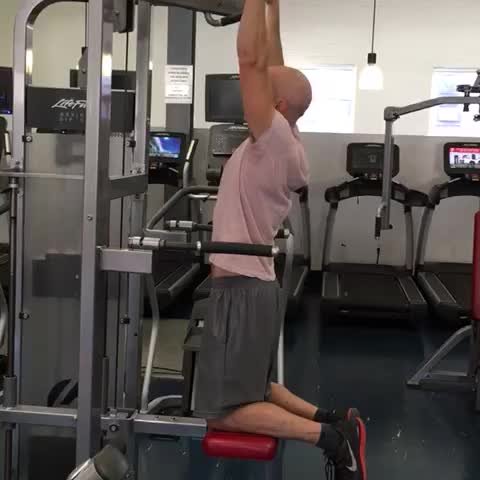
Log in to watch video demonstrations
Login to Watch3 video demonstrations available
Track your progress with Gravitus
Download Gravitus to log your workouts, track your progress, and join a community of fitness enthusiasts.

Helpful Resources
One Rep Max Calculator
Find your one rep max for any exercise without maximal testing. Essential for developing effective strength training programs.
Calculate 1RMWorkout Programs
Follow structured workout programs created by fitness professionals to maximize your strength and muscle gains.
View Programs